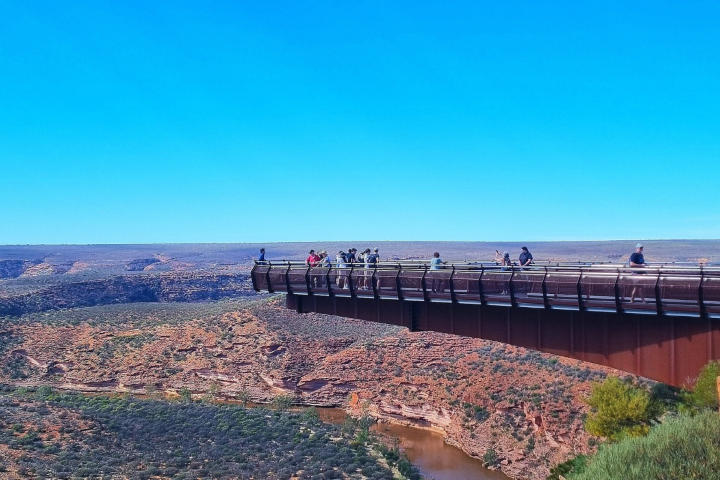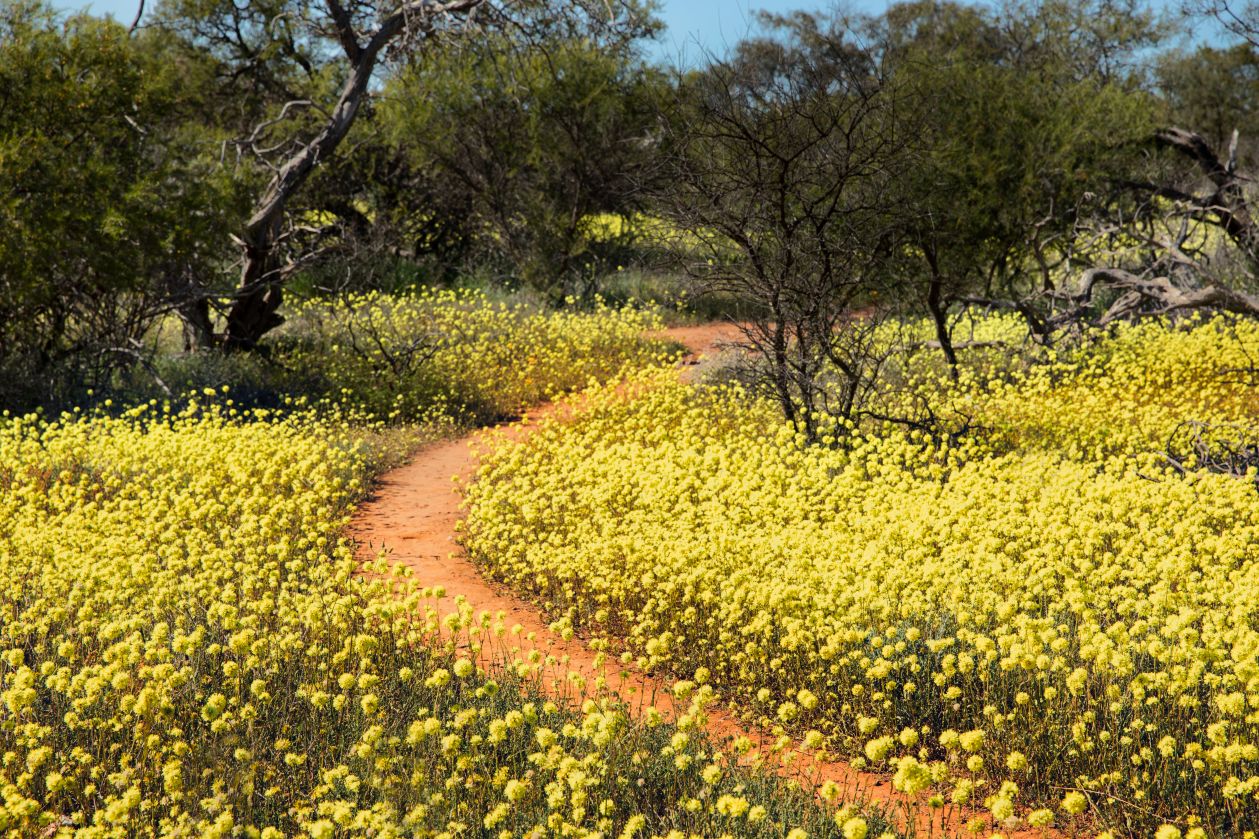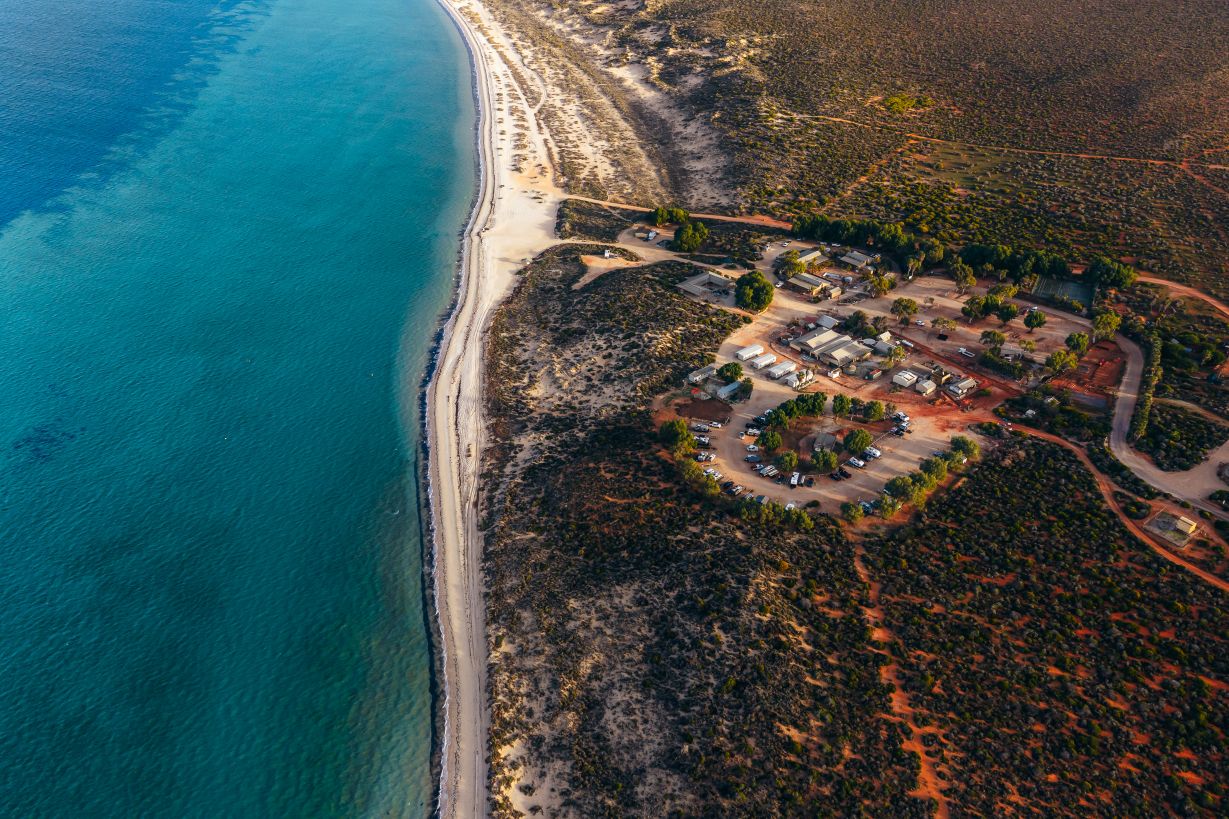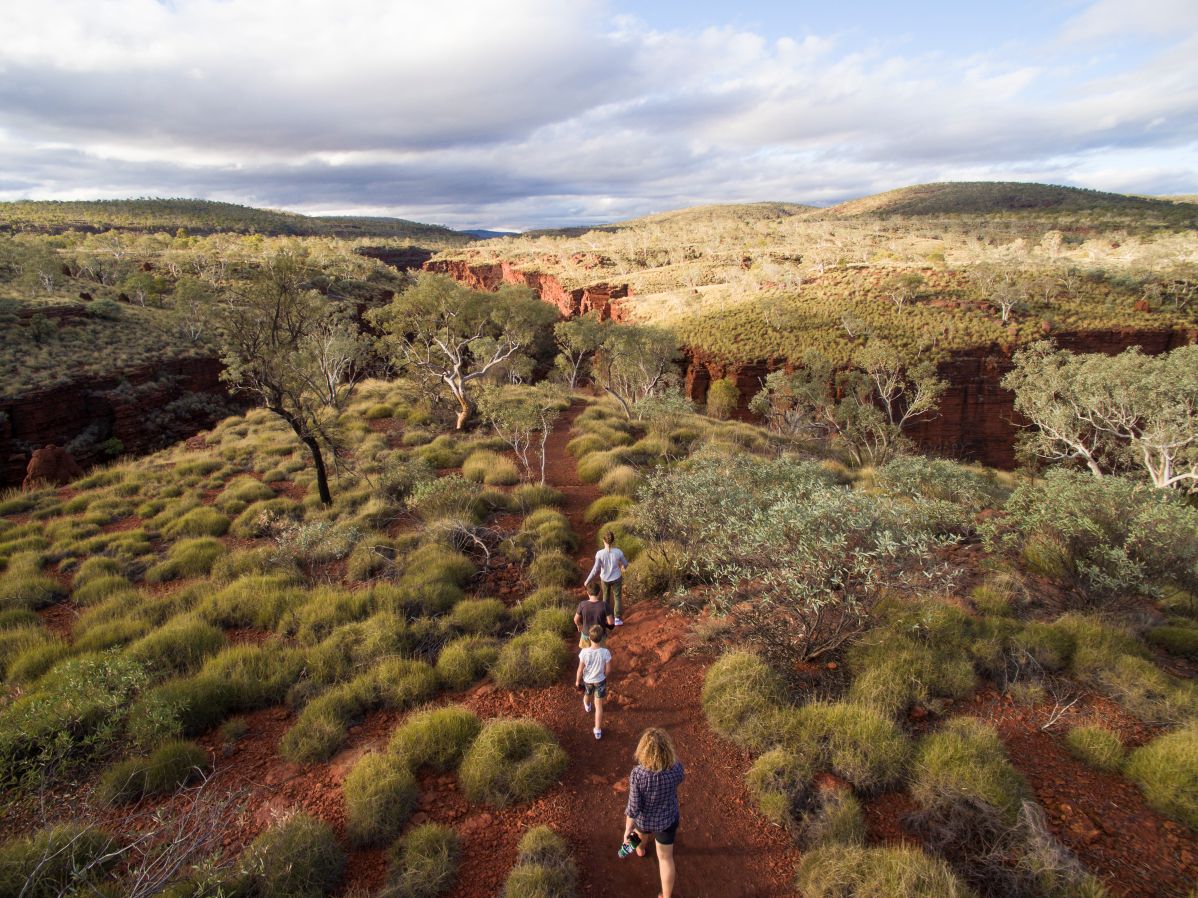
National Parks in Australia are spectacular snapshots of epic coastlines, ancient landscapes and towering canopies of forest. Exploring national parks in Western Australia is no mean feat, with some national parks covering thousands of hectares of trails, gorges, and waterfalls.
It’s easy to feel overwhelmed when planning your national park visit, but we’ve got together the Summerstar check-list on how to plan, what to bring, and what to know before embarking on your next adventure.
Western Australia is one of the biggest states in Australia, and it’s not hard to see how the weather can vary wildly between parts of the state. The north of WA can see some pretty wild weather between October and February, but that’s when the south west shines!
Accordingly, not all national parks are at their best year-round, so timing your visit makes a big difference.
 Wildflowers blanket the ground at Coalseam National Park, just outside of Geraldton. Image: Tourism Western Australia
Wildflowers blanket the ground at Coalseam National Park, just outside of Geraldton. Image: Tourism Western Australia
From September through November, the weather warms up, waterfalls start to flow, and wildflowers blanket landscapes in a kaleidoscope of colour. It’s that magical time of year when WA bursts to life and a myriad of national parks will have something unique to offer.
Chase wildflowers and embark on some hiking trails, spring in WA means mild days, cool nights, and plenty of sunshine making it ideal for road trips and outdoor adventures.
Put Kalbarri National Park, Lesueur National Park, or Karijini National Park on the agenda for fields of colour and perfect walking weather
While the coast hums with activity, the state’s national parks offer an escape into nature’s wild side, from turquoise bays and towering forests to deep ancient gorges. With a little planning, visiting WA’s national parks in summer can be one of the most rewarding adventures of the year.
National parks like Cape Le Grand National Park near Esperance or Walpole–Nornalup National Park in Walpole offer up summer serenity at its best. Think long beach days, powder-white beaches, crystal clear waters and towering forests.
Autumn brings that sweet spot of comfortable weather where the heat eases and the winter frost has yet to hit. Ideal for hiking, camping, and sightseeing national parks like Karijini National Park starts to get busy where visitors start their hikes into deep gorges and cooling off in natural pools like Fern Pool and Circular Pool.
With fewer crowds than summer and the first bursts of seasonal colour appearing, it’s a great time to slow down and really soak in the beauty of WA’s great outdoors.
You would think winter mean hibernating indoors, but winter in WA comes with crisp fresh air, rolling green hills and roaring campfires.
From June to August, the south of WA becomes lush and green with misty mornings and flowing rivers, while the north enjoys perfect dry-season weather. There’s a calmness to the regions that makes every walk, lookout, or beach feel like it’s yours alone.
Winter is one of the most underrated times to explore our state’s national parks, perfect for chasing waterfalls and green landscapes in southern parks like Shannon National Park or Stirling Range National Park and discovering ancient landscapes in the north west of WA.
 Nanga Shark Bay is a great place to base yourself when visiting Francis Peron National Park. Image: CJ Maddock
Nanga Shark Bay is a great place to base yourself when visiting Francis Peron National Park. Image: CJ Maddock
Research the national park you want to visit and figure out how long it would take to get the most out the park. Many people underestimate how much time is needed to visit national parks, and how much there is to do. WA is a massive state, and that applies to its national parks as well. For example, Purnululu National Park in the East Kimberley region of WA covers 239,723 hectares!
Staying within a national park while visiting it can be a great experience, but doing so will require planning (and sometimes booking) many months in advance.
After a full day of exploring, there’s nothing better than a hot shower and a comfy bed. Summerstar Tourist Parks are dotted near many of WA and SA’s most incredible national parks.
Here are some of our favourite national parks that are close to a Summerstar Tourist Park:
Hidden Valley Kununurra Caravan Park: One of the closest towns to Purnululu National Park, home of the Bungle Bungle Range. If you don’t get the chance to head out that way, Hidden Valley Kununurra sits nestled below Mirima National Park, which is known as a mini Bungle Bungle.
Tom Price Tourist Park: The gateway to Karijini National Park, its ancient gorges and cascading waterfalls.
Nanga Shark Bay Caravan Park: Check out the myriad of marine like to be found in Francis Peron National Park, and visit the most remote island in Australia, Dirk Hartog Island National Park.
Kalbarri Red Bluff Tourist Park: Enjoy the views of Red Bluff from this perfectly situated tourist park and tick visiting the Kalbarri Skywalk off your bucket-list when visiting Kalbarri National Park
Jurien Bay Tourist Park: Visit wildflower country when in Jurien Bay and make Lesuer National Park the stop for your trip.
Margaret River Tourist Park: Leeuwin-Naturaliste National Park is famous for its dramatic coastlines and beaches. From rugged beaches to protected coves, there’s something spectacular to see around every bend and corner.
Walpole Rest Point Caravan Park: Walk among the giants at Walpole-Nornalup National Park and get to know the tingle trees.
Esperance Bay Holiday Park: If you’ve ever seen a picture of a kangaroo on a white sandy beach, likelihood is you’re looking at a picture of Lucky Bay in Cape Le Grand National Park. Esperance is home to the quintessential beach with aqua blue waters and white sands and undoubtedly one of the most beautiful places in the world.
There are 2 important things you should do before embarking on your adventure in the national parks.
Nature might be wild, but your packing list shouldn’t be. Here are the essentials to keep your national park adventure smooth and comfortable:
 National Parks can sometimes be in remote locations, making safety a important thing to remember! Image: Tourism Western Australia
National Parks can sometimes be in remote locations, making safety a important thing to remember! Image: Tourism Western Australia
Before you lace up your boots or hit the 4WD tracks, download the Smartreka maps to make it easier to navigate through some of Western Australia’s favourite national parks and reserves.
Using the Avenza Maps App and the built-in GPS on your device, you can pinpoint your real-time location on the Smartreka map. Once downloaded, this can be done without a network connection.
These offline maps work even when there’s no mobile signal, a game-changer for staying safe in remote parks.
You can use Smartreka to:
Smartreka maps are easy to use, and available for most WA national parks. They’re the perfect travel buddy for keeping your adventure fun and safe.
National parks are special precisely because they have been reserved for conservation and need our protection.
When visiting, be environmentally conscious and follow the low impact principles of Leave No Trace (LNT) and any other advice or instructions provided in the park on signs or in a visitor guide.
Do not collect or move rocks, shells, flowers or anything else you might find interesting. Leave all objects of interest as you find them, to guard against damage and so that others can also discover and appreciate them as they are.
Look but do not touch aboriginal art or disturb sites of cultural significance in any way.